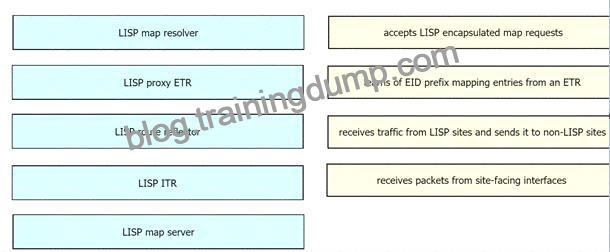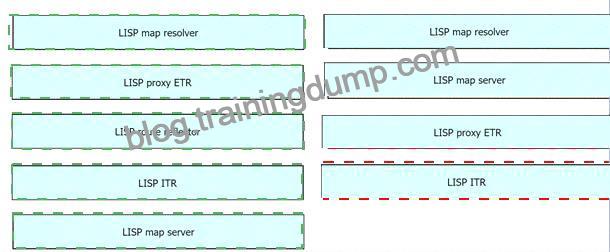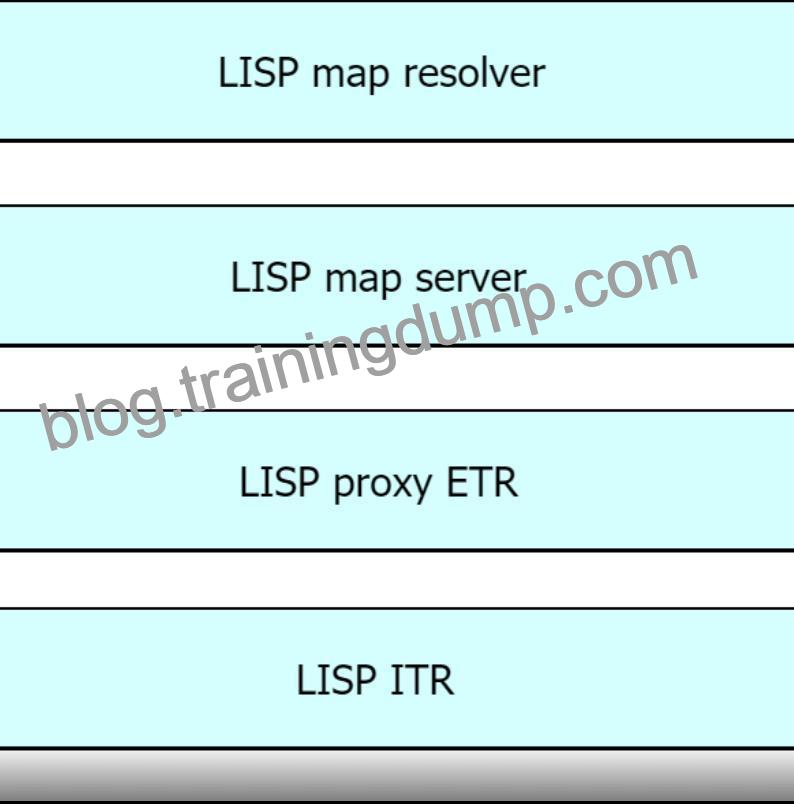Q385. Drag and drop the LISP components from the left onto the function they perform on the right. Not all options are used.


Explanation
Table Description automatically generated

+ accepts LISP encapsulated map requests: LISP map resolver
+ learns of EID prefix mapping entries from an ETR: LISP map server
+ receives traffic from LISP sites and sends it to non-LISP sites: LISP proxy ETR
+ receives packets from site-facing interfaces: LISP ITR
Explanation
ITR is the function that maps the destination EID to a destination RLOC and then encapsulates the original packet with an additional header that has the source IP address of the ITR RLOC and the destination IP address of the RLOC of an Egress Tunnel Router (ETR).
After the encapsulation, the original packet become a LISP packet.
ETR is the function that receives LISP encapsulated packets, decapsulates them and forwards to its local EIDs. This function also requires EID-to-RLOC mappings so we need to point out an “map-server” IP address and the key (password) for authentication.
A LISP proxy ETR (PETR) implements ETR functions on behalf of non-LISP sites. A PETR is typically used when a LISP site needs to send traffic to non-LISP sites but the LISP site is connected through a service provider that does not accept no routable EIDs as packet sources. PETRs act just like ETRs but for EIDs that send traffic to destinations at non-LISP sites.
Map Server (MS) processes the registration of authentication keys and EID-to-RLOC mappings. ETRs sends periodic Map-Register messages to all its configured Map Servers.
Map Resolver (MR): a LISP component which accepts LISP Encapsulated Map Requests, typically from an ITR, quickly determines whether or not the destination IP address is part of the EID namespace

Leave a Reply